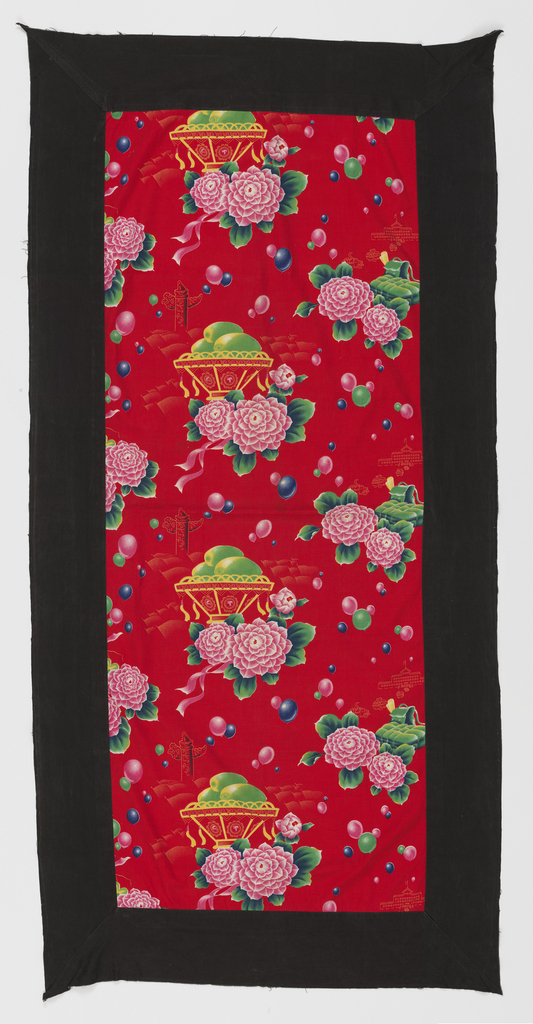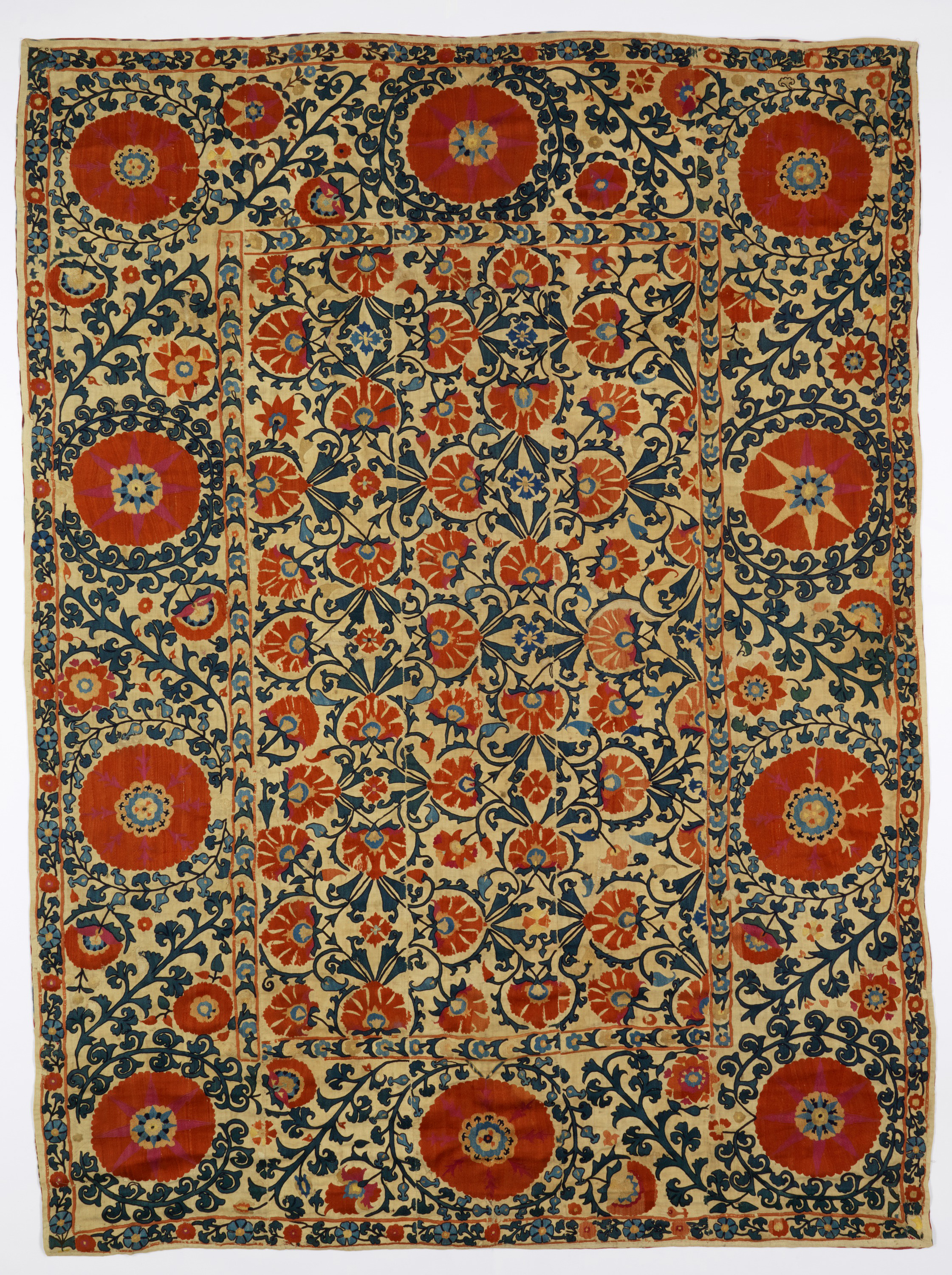Author: Donna Ghelerter In celebration of the third annual New York Textile Month, members of the Textile Society of America will author Object of the Day for the month of September. A non-profit professional organization of scholars, educators, and artists in the field of textiles, TSA provides an international forum for the exchange and dissemination...
Donated to Cooper Hewitt, Smithsonian Design Museum by New York-based textile dealer Elinor Merrell, this bedcover offers an opportunity to see how motifs employed in America were influenced by distant cultures. In the hands of a highly skilled needle-worker deft at using stem-stitch, satin-stitch, and button-hole stitch techniques, a rare coverlet was created. This block-style...
Today, indigo-dyed cotton cloth and clothing are emblematic of Japanese folk traditions. But cotton is not indigenous to Japan, and for most of Japan’s history, rural clothing was made from available plant fibers: paper mulberry, ramie, nettle, hemp, and wisteria. Cotton, which was originally introduced through Korea and China, was first cultivated in the warmer,...
Olivia Cushing Whitridge (1783-1876) was born to a prominent New England family with ties to Massachusetts, Rhode Island and Maine. She married William Whitridge, and the couple lived in New Bedford, Massachusetts. It was in New Bedford, a whaling town, that Olivia C. Whitridge created this “Mariner’s Compass” patchwork medallion. The Mariner’s Compass pattern “was...
The Young Pioneers of China, founded in 1949 as a Communist group for children aged six to fourteen, flies a red flag with a triangular cutout on its right edge. The group’s Constitution stipulates that members wear red scarves knotted around their necks to correspond with the flag’s missing section. This quilt cover depicts children...
This quilt cover features a tasseled basket containing three yellow-green mangoes that refer to the mangoes that Mao Zedong (1893-1976) gave to workers. As leader of China’s Communist Party, Mao received a basket of mangoes as a gift from the visiting Pakistani foreign minister in August 1968. Mao re-gifted the non-native delicacies to a group...
A very special family quilt in the Mariner’s Compass pattern was given to Cooper Hewitt, Smithsonian Design Museum by Susan Weitzman in 1972. Thanks to thoughtful, easy to read, handwritten inscriptions found on three of the twenty-five squares that make up the quilt, we know that Lacy Jones made the quilt in 1845, and that...
In 1934, after seven years of civil war between China’s Nationalist and Communist parties, the latter was nearing defeat. Nationalist forces had repeatedly encircled Communist headquarters, and the recently elected Mao Zedong had been removed from his position as chairman. Under new leadership, the waning Communist army broke through its enemy’s fortifications in secret. Thus...
For centuries, quilt patterns and quilting techniques have been passed down from generation to generation and within generations, from sister-to-sister, cousin-to-cousin, or friend-to-friend. Without formal training, many quilters relied on their more experienced relatives to teach them the best methods. The museum is fortunate to have two quilts from the same family, the Reeds of...
Cooper Hewitt is fortunate to have in its collection two quilts made by close relatives: Caroline Hammond Reed and her daughter-in-law, Frances Kingsley Reed, from Anderson, South Carolina. Both quilts were donated by Helen Allen Stanbury, a New Yorker who was a native of Anderson. Frances Kingsley Reed (1845–1902), wife of Caroline Hammond Reed’s son...
Suzani, meaning “of needle” in Persian, are large-scale embroideries central to Central Asian domestic culture. Young girls learned to sew at an early age, often beginning to work on textiles intended for their own marriage dowries. Suzanis were considered the most important textiles in a dowry. Indicators of skill and family wealth, they were status...
Embroidered in Bengal, India for the Portuguese market, this colcha, or bedcover, is a result of the interchange of goods and cultural influence between two trade markets. The style and materials are typical of India, but the universal theme of good triumphing over evil is illustrated through a mix of local and European imagery. Eight...
This valance fragment is just a small piece from a set of bed furnishings commissioned by Napoleon I (1769-1821) for his wife Joséphine (1763-1814). Intended for their home in Malmaison, located outside Paris, the commission consisted of a ceiling canopy, pair of curtains, bed cover and valance. Made of fine point d’Alençon lace by the...












